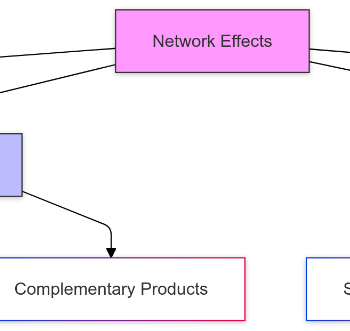What is the MSCI Emerging Markets Index?
The MSCI Emerging Markets Index is designed to measure the performance of large-cap and mid-cap stocks in emerging market countries. Since its inception in 1988, it has evolved significantly, expanding from an initial 10 countries to currently include 24-25 countries. This expansion reflects the growing importance and diversity of emerging markets within the global economy.
- What is Move to Earn? A Technical Analysis of Performance-Based Cryptocurrency Rewards
- Understanding Economic Depreciation: How Market Value Affects Your Assets
- Maximize Generational Wealth: The Ultimate Guide to Dynasty Trusts and Tax Minimization
- What is Nansen? Data Analytics Platform for Web3 Intelligence
- What is Multisig? A Technical Analysis of Multi-Signature Security
The index captures a broad spectrum of companies across various sectors, providing a comprehensive snapshot of market conditions in these regions. By tracking large-cap and mid-cap stocks, it offers insights into both established players and rising stars within these economies.
Bạn đang xem: Unlocking Growth: A Comprehensive Guide to the MSCI Emerging Markets Index
Countries Included in the MSCI Emerging Markets Index
The MSCI Emerging Markets Index encompasses a diverse array of countries, including Brazil, China, India, South Africa, and many others. The inclusion or exclusion of countries is determined by MSCI’s market classification framework, which assesses factors such as economic development, market size, liquidity, and accessibility.
This framework ensures that only those countries with sufficiently developed financial markets are included in the index. For instance, countries like Poland and Hungary have been added over the years as their markets have matured, while others may be reclassified based on changes in their economic or market conditions.
Index Composition and Rebalancing
The MSCI Emerging Markets Index is composed of approximately 1,420 constituents, representing some of the largest and most influential companies in their respective regions. The index includes giants like Taiwan Semiconductor, Tencent Holdings, and Samsung Electronics, which are not only leaders in their industries but also indicative of the technological and economic advancements in these countries.
Xem thêm : Understanding the Five-Year Rule: A Comprehensive Guide for Investors and Financial Planners
The index undergoes rebalancing twice a year—in May and November—to reflect changes in the emerging equity markets. This process ensures that the index remains representative of the current market landscape, adjusting for changes in market capitalization, sector weights, and other relevant factors.
Investment Options and Vehicles
Investors can access the MSCI Emerging Markets Index through various investment vehicles, most notably ETFs (Exchange-Traded Funds) and mutual funds. These funds track or use the index as a benchmark, allowing investors to gain exposure to a broad range of emerging market stocks with relative ease.
ETFs are particularly popular due to their lower expense fees compared to mutual funds. Additionally, ETFs can be traded on exchanges like stocks, offering greater flexibility and liquidity. This makes them an attractive option for investors looking to diversify their portfolios with emerging market exposure.
Performance and Returns
Historically, the MSCI Emerging Markets Index has shown significant growth potential. Over the past decade, it has experienced periods of strong outperformance as well as challenges. For example, from 2000 to 2010, emerging markets saw robust growth driven by rapid industrialization and urbanization. However, post-2010 and during the COVID-19 pandemic, these markets faced unique challenges that impacted their performance.
When compared to other indices like the MSCI World Index and the MSCI ACWI Index, the Emerging Markets Index often exhibits higher volatility but also higher potential returns. Understanding these historical trends is crucial for investors to set realistic expectations and make informed decisions.
Risks and Volatility
Xem thêm : Understanding Flotation Costs: How Issuing New Securities Impacts Your Company’s Financial Health
Investing in emerging markets comes with inherent risks and volatility. Political instability, monetary policy changes, and economic uncertainties can all impact market performance. These risks can lead to higher potential returns but also higher potential losses.
For instance, political upheavals or sudden changes in regulatory environments can significantly affect stock prices. However, these risks also present opportunities for growth as many emerging economies are characterized by rapid development and innovation.
Diversification and Portfolio Benefits
Including emerging markets in an investment portfolio can provide significant diversification benefits. For investors heavily invested in developed markets, adding exposure to emerging markets can improve risk-adjusted returns. This is because emerging markets often have different economic cycles and growth drivers compared to developed markets.
By diversifying into emerging markets, investors can gain exposure to rapidly growing economies with expanding middle-class populations and advancing technologies. This diversification can help mitigate risks associated with over-reliance on any single market or sector.
Economic and Market Trends
Emerging markets are characterized by strong economic growth and favorable demographic trends. Advancements in education and technology are driving innovation, while increasing middle-class populations are fueling consumer demand. Countries like China and India are becoming increasingly influential on the global economic stage.
These trends suggest a promising future for emerging markets, with many countries poised for continued growth driven by internal consumption and external trade. Understanding these trends is essential for investors looking to capitalize on the long-term potential of these regions.
Nguồn: https://staredecisis.quest
Danh mục: Blog





